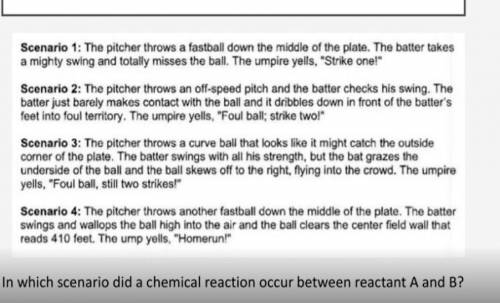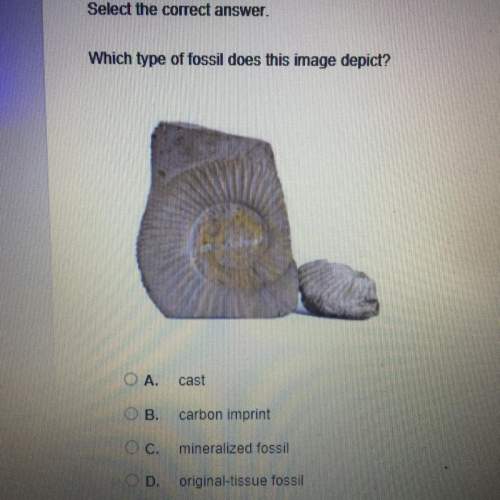
Chemistry, 14.04.2021 02:40 BigGirlsTheBest
WILL OFFER BRAINLIEST IF YOU CAN ANSWER THIS
Scenario 1: The pitcher throws a fastball down the middle of the plate. The batter takes
a mighty swing and totally misses the ball. The umpire yells, "Strike one!"
Scenario 2: The pitcher throws an off-speed pitch and the batter checks his swing. The
batter just barely makes contact with the ball and it dribbles down in front of the batter's
feet into foul territory. The umpire yells, "Foul ball; strike two!"
Scenario 3: The pitcher throws a curve ball that looks like it might catch the outside
corner of the plate. The batter swings with all his strength, but the bat grazes the
underside of the ball and the ball skews off to the right, flying into the crowd. The umpire
yells, "Foul ball, still two strikes!"
Scenario 4: The pitcher throws another fastball down the middle of the plate. The batter
swings and wallops the ball high into the air and the ball clears the center field wall that
reads 410 feet. The ump yells, "Homerun!"
In which scenario did a chemical reaction occur between reactant A and B?
Question 1 options:
1
2(INCORRECT)
3 (INCORRECT)
4


Answers: 1


Another question on Chemistry

Chemistry, 21.06.2019 20:30
14. complete and balance the equations for the single displacement reactions. a. zn + pb(no3)2 -> b. al + niso4 -> 15. complete and balance the equations for the double displacement reactions. a. agno3(aq) + nacl(aq) -> b. mg(no3)2(aq) + koh(aq) -> 16. complete and balance the equations for the combustion reactions. a. __ ch4 + o2 -> b. __ c3h6 + o2 -> c. + o2 ->
Answers: 2

Chemistry, 22.06.2019 06:00
Oxidation-reduction reactions (often called "redox" for short) are reactions that involve the transfer of electrons from one species to another. oxidation states, or oxidation numbers, allow chemists to keep track of these electron transfers. in general, one element will lose electrons (oxidation), with the result that it will increase in oxidation number, and another element will gain electrons (reduction), thereby decreasing in oxidation number. the species that is oxidized is called the reducing agent or reductant. the species that is reduced is called the oxidizing agent or oxidant. to sum up: oxidation = increase in oxidation state = loss of electrons = reducing agent reduction = decrease in oxidation state = gain of electrons = oxidizing agent part a which element is oxidized in this reaction? fe2o3+3co→2fe+3co2 enter the elemental symbol. view available hint(s) is oxidized part b which element is reduced in this reaction? 2hcl+2kmno4+3h2c2o4→6co2+2mno2+2kcl+4h2o enter the elemental symbol. view available hint(s) is reduced
Answers: 1

Chemistry, 22.06.2019 10:30
Astudent reacts 13 moles of iron with 21 moles of oxygen according to the following equation:
Answers: 2

Chemistry, 23.06.2019 02:50
What is the typical rotational frequency frot for a molecule like n2 at room temperature (25∘c)? assume that d for this molecule is 1å=10−10m. take the total mass of an n2 molecule to be mn2=4.65×10−26kg. you will need to account for rotations around two axes (not just one) to find the correct frequency. express frot numerically in hertz, to three significant figures.
Answers: 3
You know the right answer?
WILL OFFER BRAINLIEST IF YOU CAN ANSWER THIS
Scenario 1: The pitcher throws a fastball down the mid...
Questions




Mathematics, 29.10.2020 14:00

Mathematics, 29.10.2020 14:00

English, 29.10.2020 14:00



Mathematics, 29.10.2020 14:00

English, 29.10.2020 14:00


History, 29.10.2020 14:00

Biology, 29.10.2020 14:00

History, 29.10.2020 14:00



Mathematics, 29.10.2020 14:00

Mathematics, 29.10.2020 14:00

Biology, 29.10.2020 14:00




